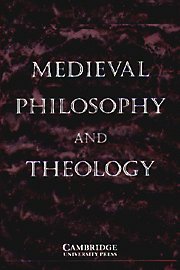No CrossRef data available.
Article contents
How Is Material Supposition Possible?
Published online by Cambridge University Press: 30 July 2001
Abstract
I. SUPPOSITION AND SIGNIFICATION
In an insightful article on the medieval theory of supposition, Elizabeth Karger noted a remarkable development in the characterization of the material mode of supposition between William of Ockham and his contemporaries in the early fourteenth century and Paul of Venice and others at the turn of the fifteenth century.1. E. Karger, “La Supposition Materielle comme Supposition Significative: Paul de Venise, Paul de Pergula,” in A. Maierú, ed., English Logic in Italy in the 14th and 15th Centuries (Naples, 1982), pp. 331–41. For William, material supposition is explicitly ‘non-significative’, while for Paul, every mode of supposition is a kind of signification.2. Paul of Venice, Logica Magna (Tractatus de Suppositionibus), ed. and trans. A. Perreiah (St. Bonaventure, 1971), p. 4: “nam omnis suppositio est significatio.” In particular, we can set these definitions in opposition:
- Type
- Research Article
- Information
- Copyright
- © 1999 Cambridge University Press




